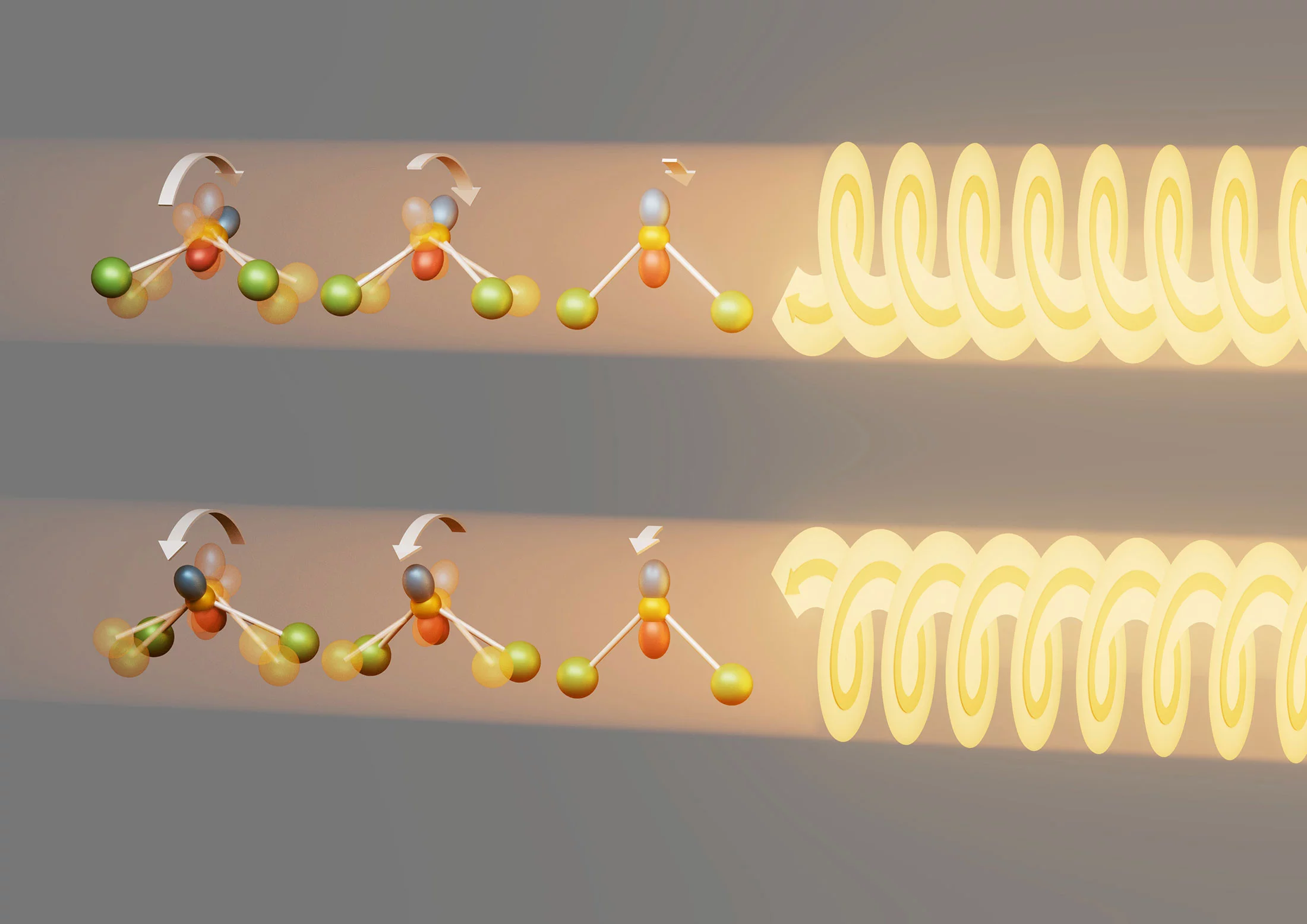…. Now we know there are chiral phonons for sure
Findings published in Nature settle the dispute: phonons can be chiral. This fundamental concept, discovered using circular X-ray light, sees phonons twisting like a corkscrew through quartz.
Throughout nature, at all scales, you can find examples of chirality - or handedness. Imagine trying to eat a sandwich with two hands that were not enantiomers – non-superimposable mirror images – of each other. Consider the pharmacological disasters caused by administering the wrong drug enantiomer or, at a subatomic scale, the importance of the concept of parity in particle physics. Now, thanks to a new study led by researchers at PSI, we know that phonons can also possess this property.
A phonon is a quasiparticle that describes the collective vibrational excitations of the atoms in a crystal lattice; imagine it as the Irish Riverdance of the atoms. Physicists have predicted that if phonons can demonstrate chirality they could have important implications on the fundamental physical properties of materials. With the rapid rise in recent years of research into topological materials that exhibit curious electronic and magnetic surface properties, interest in chiral phonons has grown. Yet, experimental proof for their existence has remained elusive.
What makes phonons chiral is the steps of their dance. In the new study, the atomic vibrations dance a twist that moves forwards like a corkscrew. This corkscrew motion is one of the reasons there has been such a drive to discover the phenomenon. If phonons can revolve in this way, like the coil of wire that forms a solenoid, perhaps they could create a magnetic field in a material.
A new slant on the problem
It is this possibility that motivated the group of Urs Staub at PSI, who led the study. “It is because we are at the juncture between ultrafast X-ray science and materials research that we could approach the problem from a different angle,” he says. The researchers are interested in manipulating chiral modes of materials using chiral light - light that is circularly polarised.
It was using such light that the researchers could make their proof. Using quartz, one of the best-known minerals whose atoms - silicon and oxygen - form a chiral structure, they showed how circularly polarised light coupled to chiral phonons. To do this, they used a technique known as resonant inelastic X-ray scattering (RIXS) at the Diamond Light Source in the UK. This was complemented with supporting theoretical descriptions of how the process would create and enable the detection of chiral phonons from groups at the ETH Zurich (Carl Romao and Nicola Spaldin) and MPI Dresden (Jeroen van den Brink).
“It doesn’t usually work like this in science!”
In their experiment, circularly polarised light shines on quartz. The photons of light possess angular momentum, which they transfer to the atomic lattice, launching the vibrations into their corkscrew motion. The direction that the phonons revolve depends on the intrinsic chirality of the quartz crystal. As the phonons revolve, they release energy in the form of scattered light, which can be detected.
Imagine standing on a roundabout and throwing a Frisbee. If you throw the Frisbee with the same direction of movement as the roundabout, you would expect it to whizz. Throw it the other way and it will spin less, as the angular momentum of the roundabout and the Frisbee will cancel out. In the same way, when the circularly polarised light twists the same way as the phonon it excites, the signal is enhanced, and chiral phonons could be detected.
A well-planned experiment, careful theoretical calculations, and then something strange happened: almost everything went according to plan. As soon as they analysed the results, the difference in response as the chirality of the light flipped was undeniable.
“The results were convincing almost immediately, especially when we compared the difference with the other quartz enantiomers,” remembers PSI scientist and publication first-author Hiroki Ueda. Sitting at his computer to analyse the data, Ueda was the first person to see the results: “I kept checking my analysis codes to make sure it was true.” Staub emphasises, “It’s not normal! It doesn’t usually work like this in science!”
Beautifully simple
During the quest for chiral phonons, there have been several false alarms. Will this settle the debate? “Yes, I think so, that’s the beauty of this piece of work,” believes Staub, whose opinion was shared by the referees at Nature. “Because it’s simple, and beautiful and straightforward. It’s obvious. It’s so simple, it’s obvious that this is the chiral motion.”
Text: Paul Scherrer Institute / Miriam Arrell
© PSI provides image and/or video material free of charge for media coverage of the content of the above text. Use of this material for other purposes is not permitted. This also includes the transfer of the image and video material into databases as well as sale by third parties.
Contact
Dr. Urs Staub
Group Leader Microscopy and Magnetism
Paul Scherrer Institute PSI
+41 56 310 44 94
urs.staub@psi.ch
Original Publication
Chiral phonons probed by X rays
Hiroki Ueda, Mirian García-Fernández, Stefano Agrestini, Carl P. Romao, Jeroen van den Brink, Nicola A. Spaldin, Ke-Jin Zhou, and Urs Staub
Nature (Online 7. June 2023)

